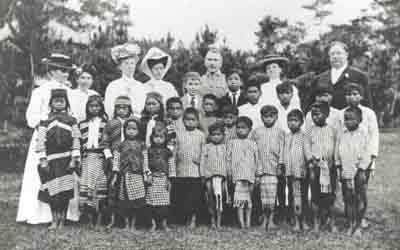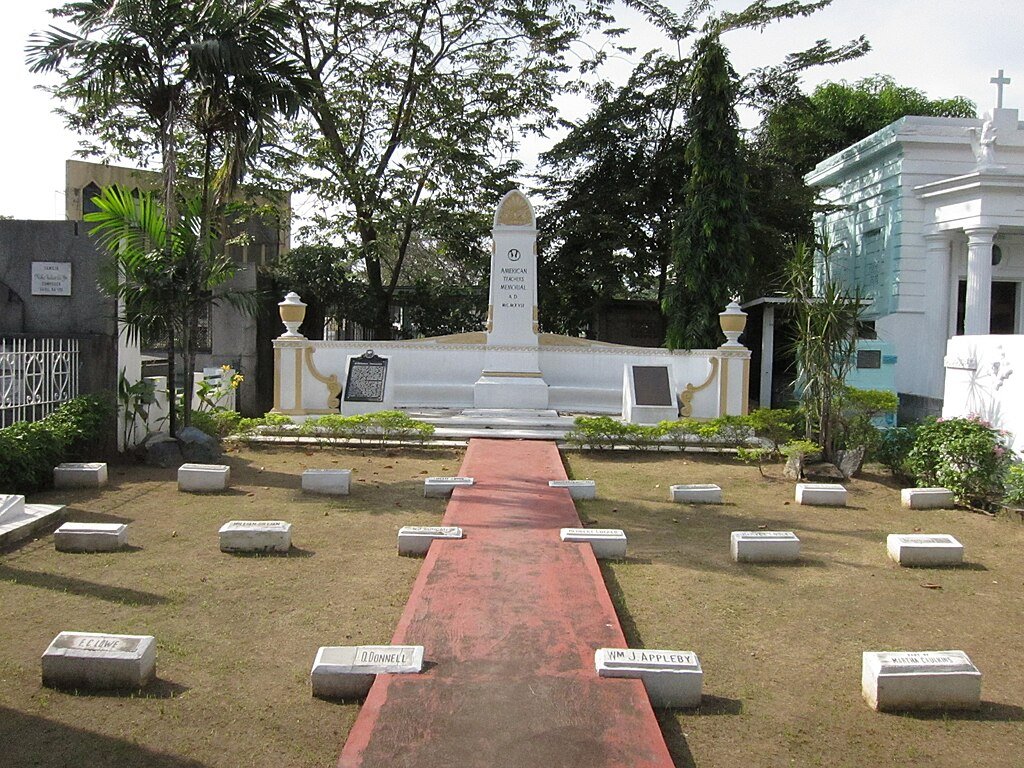A Brief History of the Thomasites

In the early days of the American colonial period, the Philippine Commission sent
teachers from the United States to the Philippines with the purpose of establishing
an educational system. Named after the ship that transported them, the United States
Army Transport Thomas, the Thomasites expanded to become a powerful force in the
colonial project. Their work as educators served the imperial vision of assimilating
Filipinos into American culture and raising a young generation of followers.
The Thomasites were technically not the first Western educators in the Philippines.
During their colonial reign, the Spanish established schools for Filipino children.
The US Army used these as a starting point to continue elementary education, however,
they quickly found that the Spanish system was limited. The American government knew
the region needed a strong educational system to serve as the base of this new society,
so they instituted a new system of education in the Philippines.
Read More......
Foundation, Purpose and Etymology

The Thomasites arrived in the Philippines on August 21, 1901, to establish a new
public school system, to teach basic education, and to train Filipino teachers, with
English as the medium of instruction.
Adeline Knapp, Thomasite and author of The Story of the Philippines, said: "Our
nation has found herself confronted by a great problem dealing with a people who
neither know nor understand the underlying principles of our civilization, yet who,
for our mutual happiness and liberty, must be brought into accord with us ... the
American genius, reasoning from its own experience in the past, seeks a solution of
the problem, a bridging of the chasm, through the common schools."
Philippines had enjoyed a public school system since 1863, when a Spanish decree first
introduced public elementary education in the Philippines. The Thomasites, however,
expanded and improved the public school system and switched to English as the medium of
instruction.
Read More......
Legacy


The Thomasites built upon the Spanish school system created in 1863 and the
contributions laid down by the U.S. Army. They built elementary schools and
learning institutions such as the Philippine Normal School, formerly the
Escuela Normal de Maestros during the Spanish period (now Philippine Normal
University) and the Philippine School of Arts and Trades, formerly the Escuela
Central de Artes y Oficios de Manila (now Technological University of the
Philippines) in 1901, the Tarlac High School on September 21, 1902, and the
Tayabas High School (now Quezon National High School), on October 2, 1902.
The Thomasites also reopened the Philippine Nautical School, which was
originally established by the Board of Commerce of Manila in 1839 under Spain.
About a hundred of the Thomasites stayed on to live in the Philippines after
finishing their teaching assignments. They transformed the Philippines into
the third largest English-speaking nation in the world and became the precursors
of the present-day U.S. Peace Corps Volunteers.
For their contribution to Philippine education, the Thomasites Centennial
Project was established in cooperation with American Studies associations in the
Philippines, the Philippine-American Educational Foundation, the Embassy of
the United States of America in Manila, and other leading cultural and educational
institutions in the Philippines.
Several Thomasites are interred at the American Teachers Memorial, a special
plot inside the Manila North Cemetery. The current memorial was erected in 1917.
Recommended Reading
BEARERS OF BENEVOLENCE

A century ago the American colonial government
in the Philippines created a wide-scale public education system throughout the islands.
Bearers of Benevolence is an anthology of recollections, eyewitness accounts, and
official documents from the participants in this historic undertaking -from soldier-teachers,
authentic Thomasites, government beaurucrats, and Filipino students.
Their voices speak of high hopes and hardships, self-satisfaction and sacrifice. This
volume brings together a range of real-life responses to the official policy of "benevolent
assimilation" and reveals its impact on individual lives. These are the stories of men and
women in the early 20th century Philippines - of Americans bearing benevolence to Filpinos
and of Filipinos bearing benevolence - and of both still assimilating the meaning of that
experience 100 years later.
"Hardships?...I think the only real hardship I endured during those first two years was
the realization of the poverty and the meager outlooks, of the wholesale disease with no
remendy, of the restraint, ignorance, and persecution in the lives of those poor little
brown people. In the face of their hardships, my own privations sanke into insignificance.
The work among the young people was most encouraging, the most satisfying I have ever been
called upon to do, and I am very thankful that I was given an opportunity to share in it."
Anna K. Donaldson, Thomasite, Iriga, Bicol 1901






